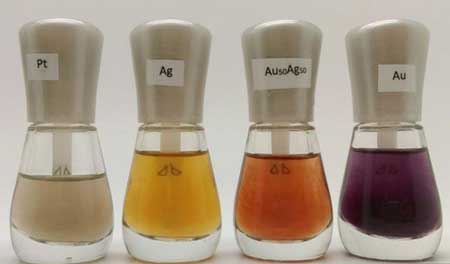| Posted: Mar 29, 2017 |
Plasmonic Goldfinger - integrating nanoparticles into transparent nailpolish
(Nanowerk News) Since ancient times, people have used lustrous silver, platinum and gold to make jewelry and other adornments. Researchers have now developed a new way to add the metals to nail polish with minimal additives, resulting in durable, tinted -- and potentially antibacterial -- nail coloring.
|
|
They report their method in ACS' journal Industrial & Engineering Chemistry Research ("Direct Integration of Laser-Generated Nanoparticles into Transparent Nail Polish: The Plasmonic Goldfinger").
|
 |
| Using metal nanoparticles in clear nail polish makes it durable and colorful without extra additives. (© American Chemical Society)
|
|
Nail polish comes in a bewildering array of colors. Current coloring techniques commonly incorporate pigment powders and additives. Scientists have recently started exploring the use of nanoparticles in polishes and have found that they can improve their durability and, in the case of silver nanoparticles, can treat fungal toenail infections.
|
|
Marcus Lau, Friedrich Waag and Stephan Barcikowski wanted to see if they could come up with a simple way to integrate metal nanoparticles in nail polish.
|
|
The researchers started with store-bought bottles of clear, colorless nail polish and added small pieces of silver, gold, platinum or an alloy to them. To break the metals into nanoparticles, they shone a laser on them in short bursts over 15 minutes.
|
|
Analysis showed that the method resulted in a variety of colored, transparent polishes with a metallic sheen.
|
|
The researchers also used laser ablation to produce a master batch of metal nanoparticles in ethyl acetate, a polish thinner, which could then be added to individual bottles of polish. This could help boost the amount of production for commercialization.
|
|
The researchers say the technique could also be used to create coatings for medical devices.
|

